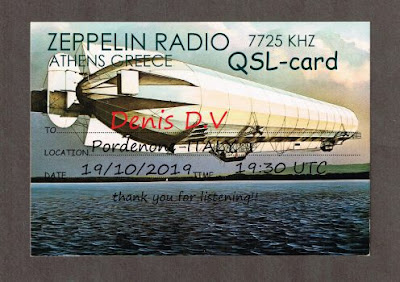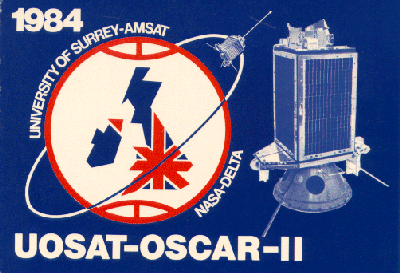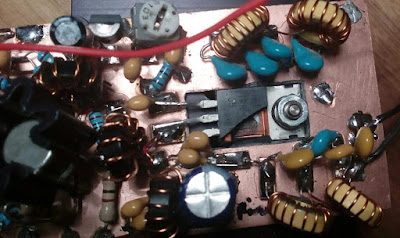Ed DD5LP sent us some very interesting information about a resurgence of shortwave broadcast activity in Europe. Thanks Ed.
Here is a collection of QSL cards sent out last year by some of these new stations.
Hi
Bill,
I'm
just listening to the latest podcast and note your returning lovefor AM
Broadcast stations and wondered if you also see the trend in the US that we are
seeing in Germany?
I
know you have WTWW but that's a commercial SW AM Broadcast radio station, that
has always been owned and run by a family of Hams. What we are seeing Germany
is that when a commercial broadcaster such as Deutsche Welle closes down their
Shortwave Broadcast stations, Amateurs are applying for and getting licences to
the freed up frequencies. This started about 5 years ago with channel292
(Channel292.de) on initially 6070 kHz and then later also on 7440 kHz.
This amateur is located near Ingolstadt in Bavaria and runs 10 kW using the
driver stage from the old DeutscheWelle 100 kW transmitter on the same
frequency. He is partnered with a group in Austria who run a major AM station
near Vienna that has two 500 kW transmitters and some fantastic massive antenna
systems with 20dB gain across the whole of the HF spectrum. That Austrian
station is still owned by the Austrian government in case they need a broadcast
station to transmit around the world at any time. It's kept "idling"
at 100 kW in the meantime and like Channel 292 includes the German language "DARC
Radio" amateur radio program in what it transmits.
New
on the scene is "shortwaveradio.de" - Yes the station name is the same
as their web address. They currently run just 1 kW into an Inverted-V wire
antenna on 3975 kHz (in the 75m BROADCAST band over here) and 6160 kHz in the
49m broadcast band. As they are located
in North Germany, I don't get much of a signal from them down here in the south
and the recording is using a WebSDR receiver. Their dipole is orientated to
cover the Benelux countries and the UK. The lads at this station are always
looking for English content, so if you want part of Soldersmoke to be
transmitted on a shortwave AM broadcast station, (as you mentioned in the
latest podcast) I can easily put you in touch with them.
One
more for the list could be Radio Caroline in the UK. The station, which once
was the main pirate radio station off the coast of the UK is now a volunteer
historic preservation society (with some radio Hams involved) who have been
granted a local radio service licence using a frequency (648 kHz) and
transmitter site previously used by the BBC world service! Their old nemesis ! (http://www.radiocaroline.co.uk/#home.html )


















































